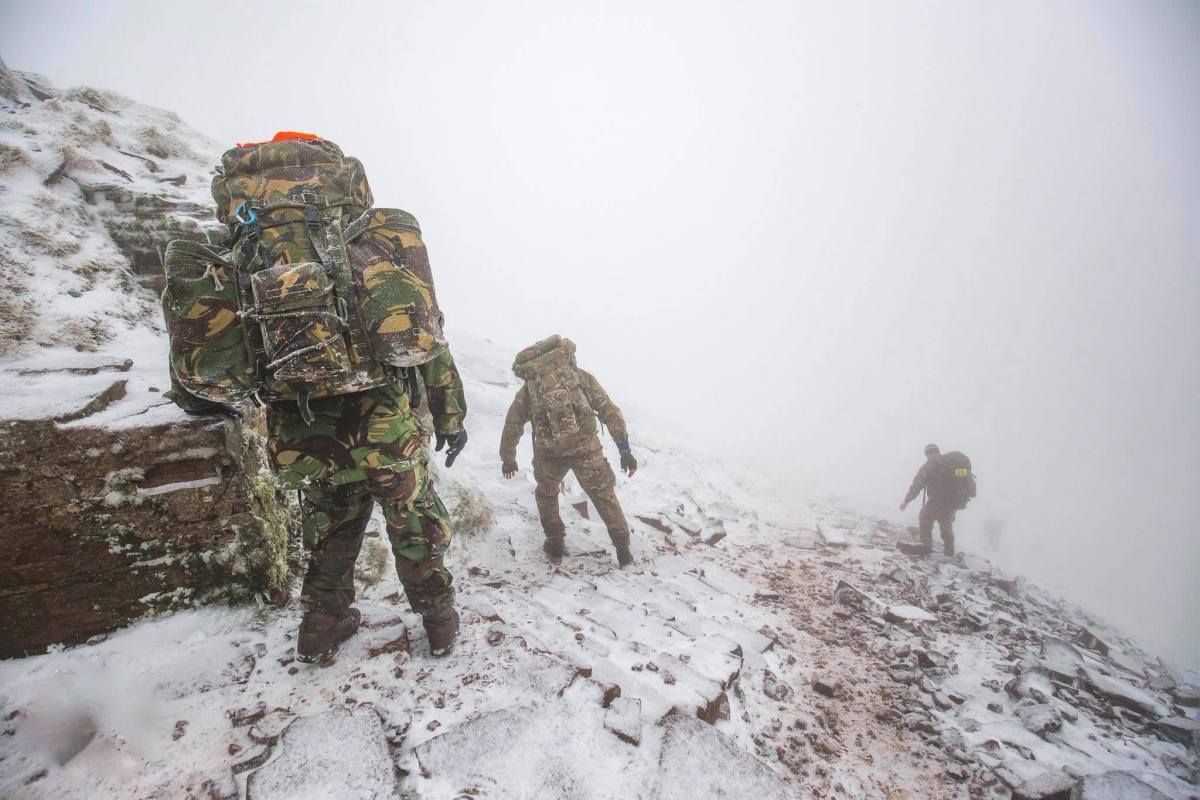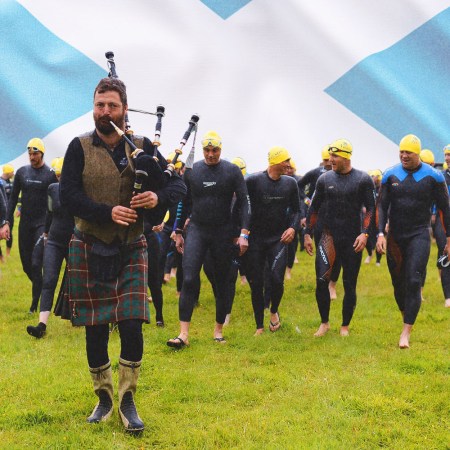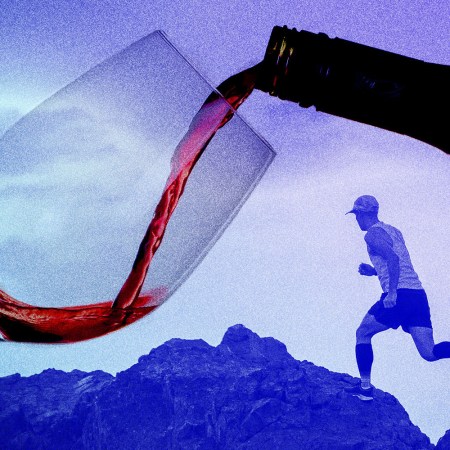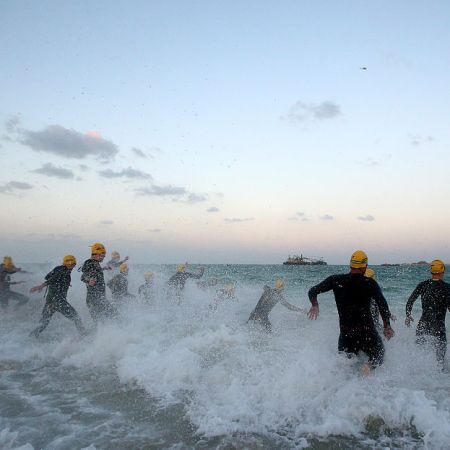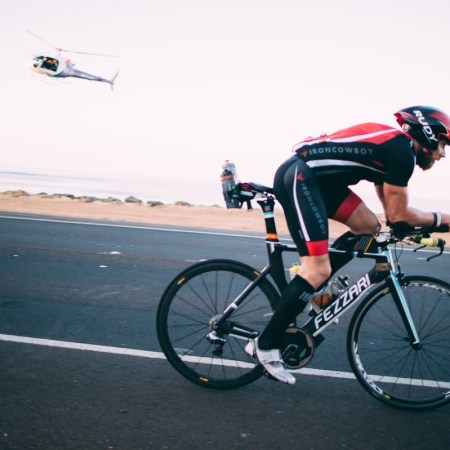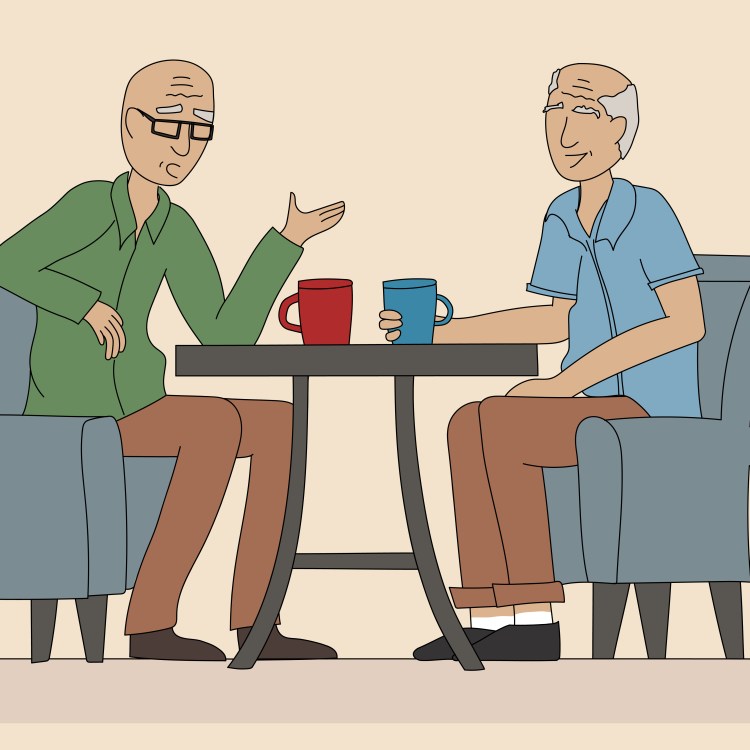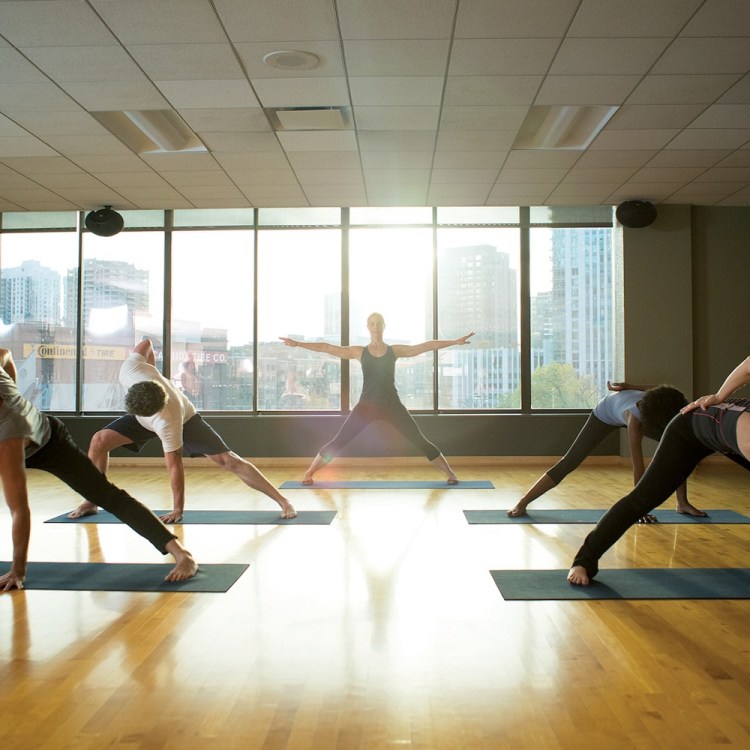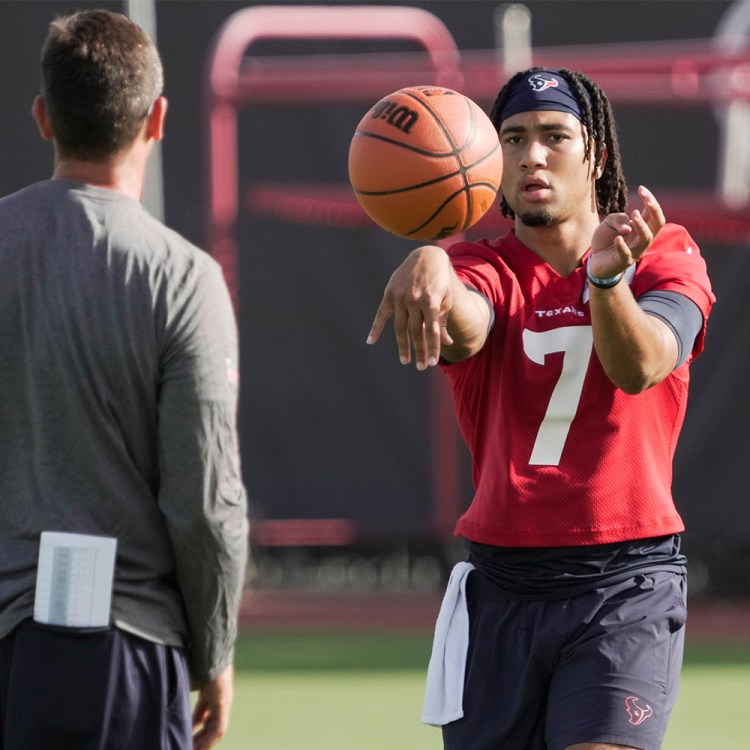In winter of 2003, somewhere in the Romanian Alps, former British Special Forces soldier Ken Jones was caught in an avalanche that swept him over the edge of a cliff. Once he regained consciousness, Ken knew enough about extreme conditions to realize that his odds of survival were remote: he was cut off from supplies and temperatures were below freezing — not to mention his broken leg, shattered pelvis and massive internal bleeding.
I first became acquainted with Ken, founder of Avalanche Endurance Events (AEE), through his book, Darkness Descending, which tells the story of his three-day crawl to safety following the avalanche that almost ended his life. Now company director of AEE, Ken is responsible for organizing a wide range of unique outdoor events for men and women, which take as their inspiration the brutal challenges inflicted on British soldiers trying out for Her Majesty’s Special Forces.
The Fan Dance Race Series Special Forces Challenge is just one of those events — an entry-level initiation which battered me physically and mentally when I attempted it this past July. As a former rugby player and college running back, I’ve had my fair share of pain. But never has a sporting event reduced me to tears of relief at glimpsing the finish line.
While many people are happy with a solid gym routine, I’ve always preferred having something to train for. I considered a marathon, but after seeing the sheer number of athletes streaming through my Brooklyn neighborhood in November, I wondered if a triathlon might be the answer. But unless you live between a park and a YMCA, New York City isn’t the most convenient place for training.
The Fan Dance race takes place in the Brecon Beacons National Park, and includes two ascents of Pen-y-Fan, the highest mountain in South Wales. A few weeks before my event, members of Britain’s military elite dragged their bodies up the infamous Jacob’s Ladder and over the summit not as part of a race, but to fulfill one of the many battering elements of Special Forces “selection.”
The AEE race covers about 24km of mountain track and gives entrants the choice of either a “clean fatigue” experience (where only basic supplies are carried) or the more authentic “load bearing” experience, in which you lug 35 lbs. plus 4-5 liters of water and food over the course in a military-grade backpack. The race is organized in the spirit of a military event, and load-bearers must have their packs weighed during registration. Packs are also sometimes weighed after the race. Anyone without the correct load is disqualified.
I signed up for the race in January and paid my entry fee, which was about $70. A few weeks later, I received several PDF documents detailing the type of backpack and the many items I would need to have in it — not only for my safety — but for the well-being of my fellow runners. Some of the items were fairly basic (first-aid kit, compass), but others I had to buy: a “bivi bag,” whistle, spare laces, head-lamp, black electrical tape — items I at the time thought should have been optional, but proved invaluable when my backpack belt snapped five minutes before the race began.
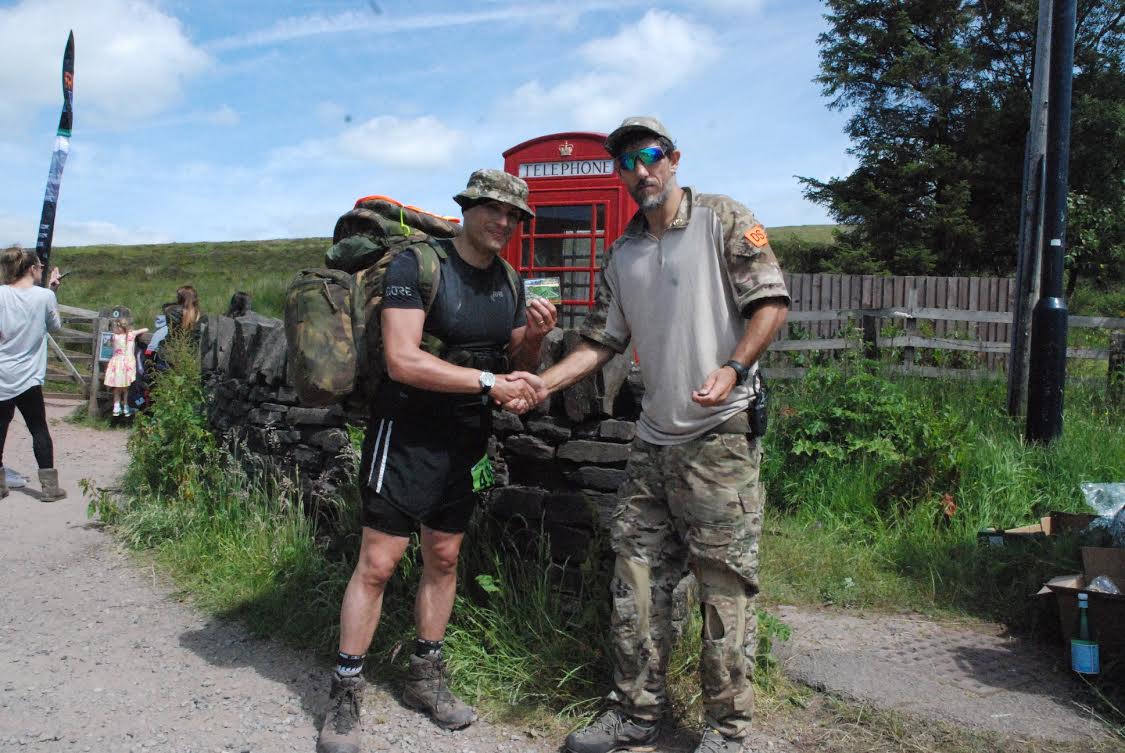
Oral surgery and several colds hampered my training in late winter, but once my backpack (or “Bergen”) arrived from a military surplus store in the U.K., I felt a nervous tickle whenever I peered into my closet. This helped me approach training with some seriousness.
Based on Ken’s training guide, (another PDF), I built up gradually until I was able to cover about 12 miles on the track at a good pace. Then I would start each run with an hour on the treadmill (walking) at 15 percent. I had never used the incline feature before, and at first, I could barely do five minutes without having to level out the track, legs burning, ass on fire. But as Ken suggested, gradually building up was the key. This would help prevent me from entering the injury zone, which I did in April, with debilitating IT Band syndrome, a malady that I was able to remedy quickly with prescription cream, daily stretching and foam rolling.
Once 60 minutes of incline training followed by a flat 90-minute outdoor run became a weekly event, I introduced load-bearing into my routine. First at 15 lbs, then up to 30, once every two weeks — but never more, as Ken warns entrants (yes, another PDF) about the dangers of over-training with loads. The Fan Dance, he says, is about heart and lungs, rather than bulging muscles. “Have character,” he suggests. “Don’t be one.”
Halfway through my training, I learned what must be second nature to marathoners and triathletes: that endurance events are a sort of eating contest. But only certain foods qualify. Tailoring my diet and learning to eat on the move (mostly gels and Clif bars) became vital parts of my training routine.
Running in the humid summer heat of New York City definitely gave me an edge over fellow participants training in the United Kingdom. That said, relying on a treadmill to prepare me for the undulating terrain of the Welsh mountains was dangerously foolish, and almost cost me the race on the return leg up Jacob’s Ladder.
After months of training, preparation and nervous excitement, it was time to pack my Bergen and head to the U.K. When I registered the night before at AEE’s base camp, it was easy to strike up a conversation with other participants as we waited to have our packs weighed. Some were planning to walk the course, and set their sights on simply finishing — which in itself is no easy feat. Others, including current and former military and law-enforcement personnel, wanted to achieve what Ken described as the ‘Holy Grail’ of selection times: finishing in under four hours.
One of the most torturous elements of the build-up was trying to sleep the night before. Every time I thought about the race, adrenaline would flutter through my body, and I’d be wide awake, blinking in the darkness. In the morning, the large breakfast I had laid out like a last meal went uneaten.
As a former rugby player and college running back, I’ve had my fair share of pain — but never has a sporting event reduced me to tears of relief at glimpsing the finish line.
The drive to the base of Pen-y-Fan went smoothly, considering I was behind the wheel of what felt like a golf cart with a manual transmission on the ‘wrong side of the road.’
There were probably about 200 other participants in the race, and many were already there, perched in their cars, glassy-eyed. It was early, with mist crowning the summit, and sheep and cows staring at the ground in a state of half-sleep. The temperature hovered around 45 degrees Fahrenheit.
Once all the entrants had signed in (some people register the night before, but don’t show up the morning of the race), we assembled in a loose group on the slope of Pen-y-Fan where — hours later — we would hopefully come back down. Some would not, however, and those unlucky participants, either injured or just too tired to go on, would have be ferried back to base camp by the directing staff (D.S.), many of whom, like Ken, are former Special Forces soldiers. In the moments before the starting gun, I fumbled to tape up my broken belt buckle while several Dutch paratroopers, all over six-foot-five and donning uniform and berets, chattered excitedly next to me.
Arguably the most difficult part of the Fan Dance is the return to the summit up perilous Jacob’s Ladder, a stone staircase that makes it possible to manage the severe gradient. Usually, during any race, I try not to think. I just breathe, and remain as calm as possible, as though operating a machine of muscle, sinew, bone and blood. But on Jacob’s Ladder my body started to fail.
The path was wide enough only for one climber at a time, and if I did stop and step to the side, would almost certainly have slid down the viciously steep bank with all the weight in my pack. With each step my legs shook — I felt like a toddler taking his first steps. I was powerless to stop the pain as it graduated from severe burning to a kind of numbness. Each time I lifted a leg onto a new step, cramps tore through my inner thighs. The worst part, though, was that what I thought to be the summit turned out to be a nasty, evil little corner. I was less than halfway to the top. From that moment on, finishing the race would come down to being able to control my thoughts.
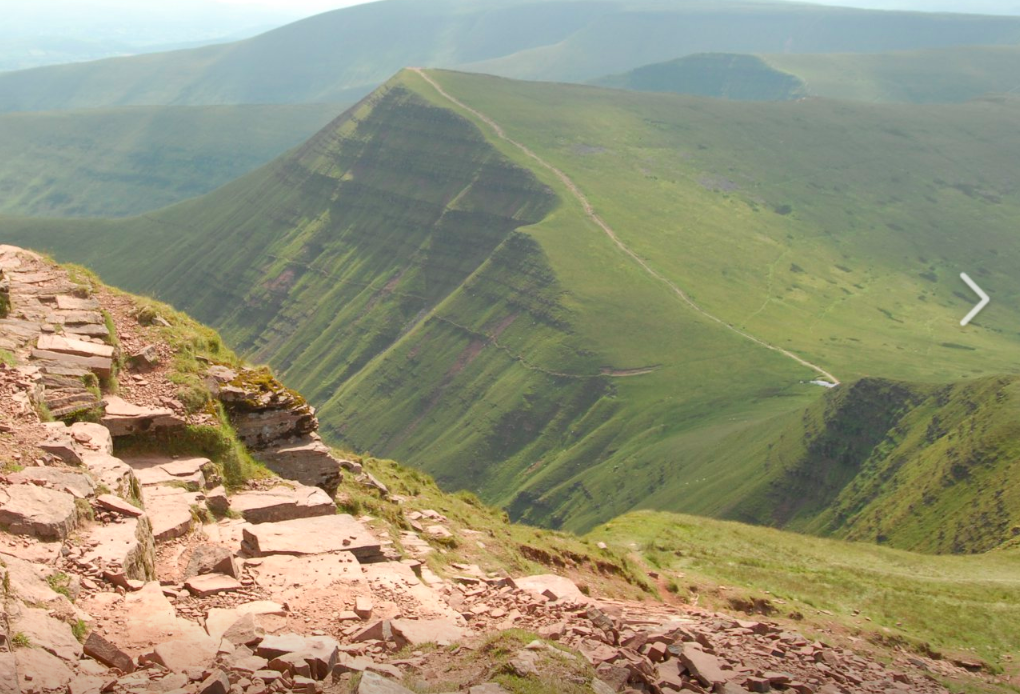
When I finally reached the summit, gasping for breath but euphoric, a member of the D.S. barked at me mercilessly for not wearing “the correct fucking shorts.” It’s strange to say, but if he hadn’t, I might not have finished the race. Somehow, his admonition motivated me, not out of anger — but a sense of duty to myself and to the event.
Another way the Fan Dance embodies the spirit of soldiering is in the camaraderie between runners. If you need food or water, all you have to do is open your mouth and point. I partnered with another runner for about 14km, each of us taking turns to set the pace. This created a unique bond of friendship that is hard to describe, but must be a faint echo of the intense fraternity that develops between soldiers, and which induces such private, emotional agony when comrades fall.
“Have character,” says Ken Jones. “Don’t be one.”
The Fan Dance race is not without drama. A year or two ago, a runner came across a tourist in cardiac arrest and stopped to perform life-saving CPR, which prompted Ken to give special recognition for a job well done. This is a good example of the Fan Dance ethos: it’s not the race that’s important, it’s the commitment to attempting something spectacularly difficult for normal people like myself, the willingness to endure physical anguish for a finishers’ patch and a handshake from the D.S.
In the week it took me to recover, I swore I would never do anything like the Fan Dance ever again. But now, as I replay moments of the race, I find myself uncontrollably drawn to the thrill of it, to the extraordinary moments of exhalation I enjoyed so high up on a stony sliver of path, as if floating over the white dots of sheep that grazed thousands of feet below. I felt the veil between self and the natural world momentarily lift.
I will never forget Ken’s closing remarks at AEE Base Camp that afternoon, as finishers peeled off socks welded to skin with the fluid from burst blisters. I can’t remember his exact words, but he assured us that very soon the pain would recede to memory, and the greater the pain, the sweeter the memory.
Whether you’re looking to get into shape, or just get out of a funk, The Charge has got you covered. Sign up for our new wellness newsletter today.
